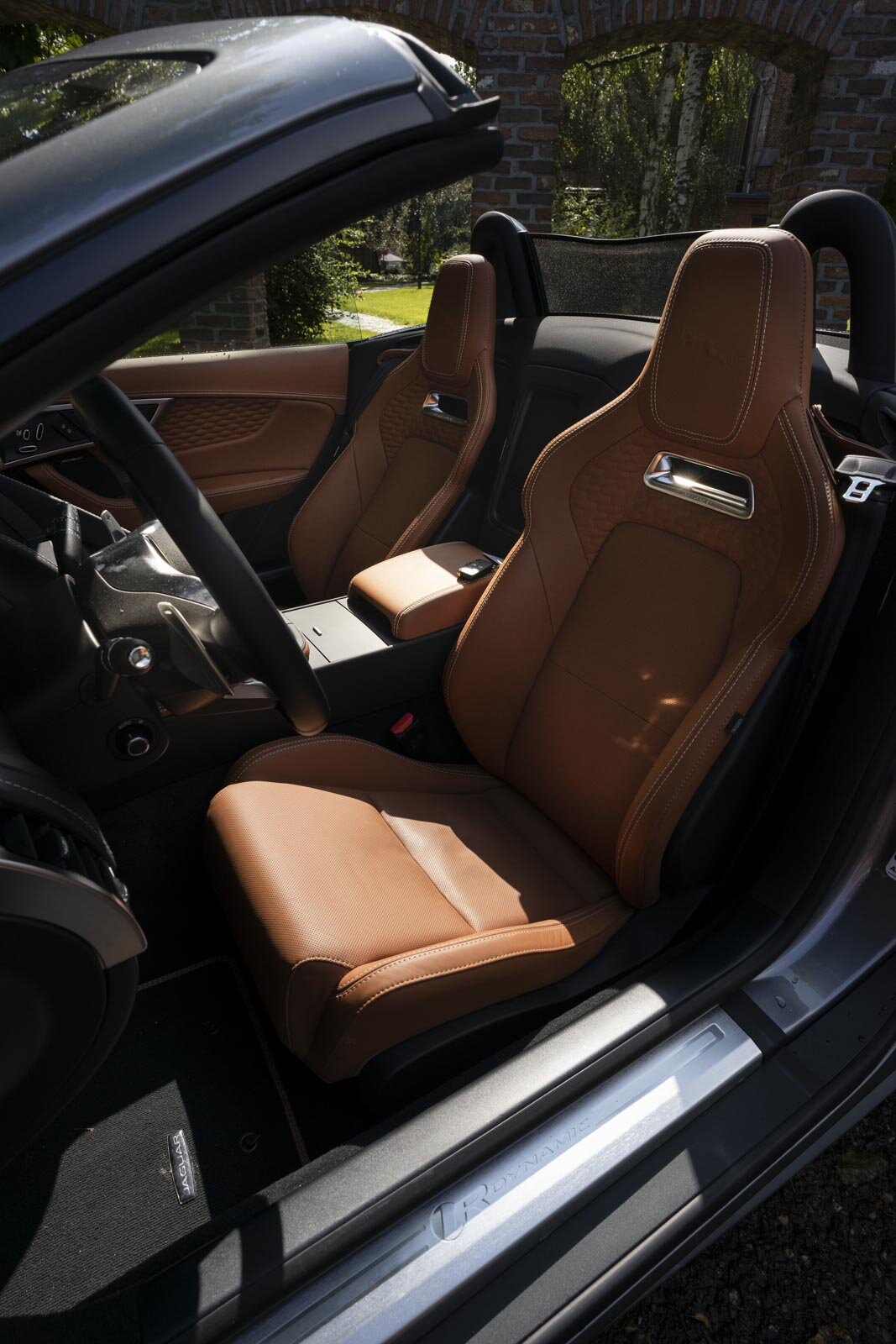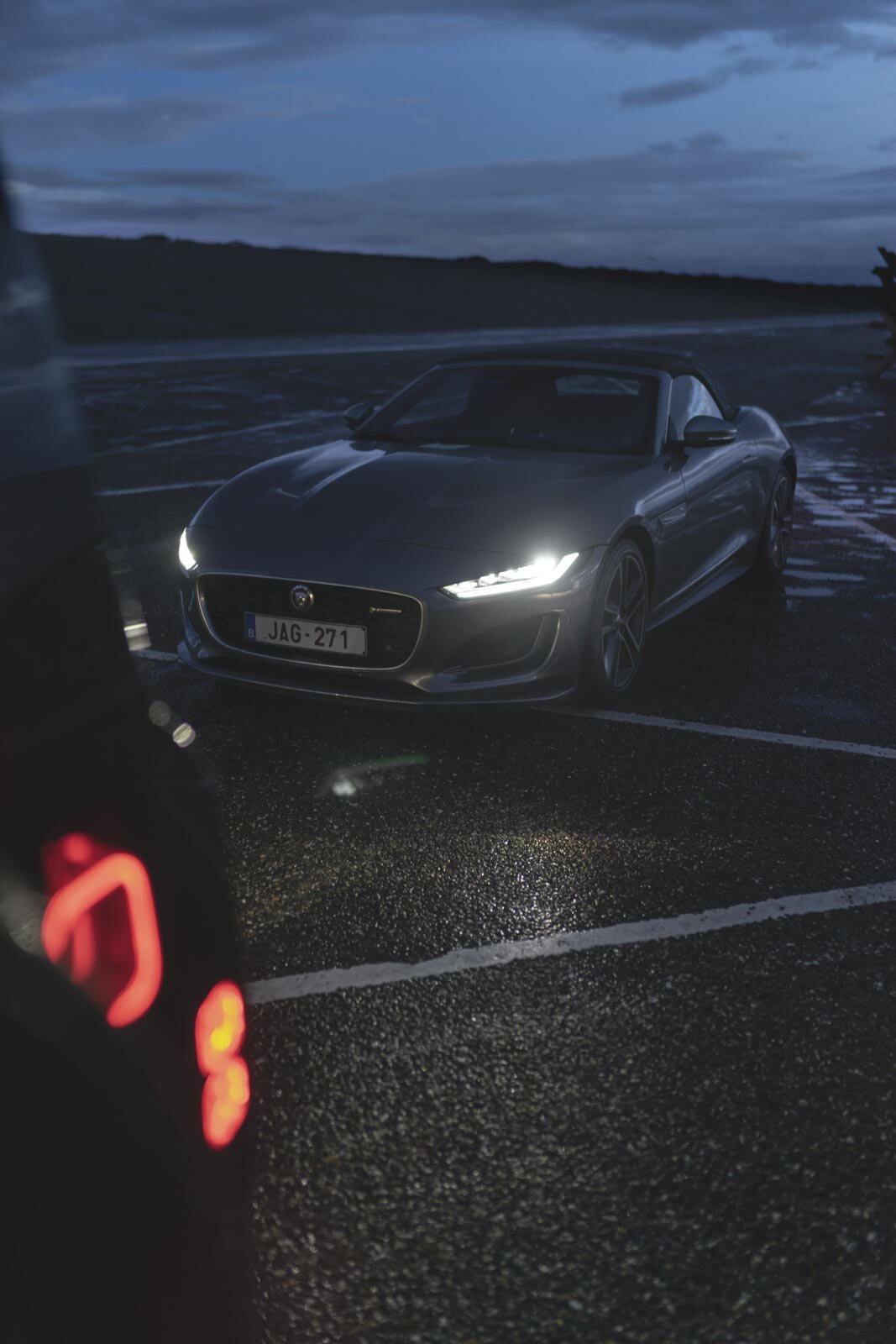Jaguar F-Type P300 Convertible, is it enough?
First things first. No, I’m not claiming all the convertibles, this is pure coincidence testing this car after the Lexus LC500 Convertible! So I’m not suffering from an early midlife crisis! On to the review: is the 2.0-liter four-cylinder enough for the F-Type Convertible?
It ain’t the epic V8
Jaguar Land Rover -the dome in which Jaguar is located- develops an earthshaking, eargasm giving and gasoline guzzling Supercharged 5.0-liter V8 that they also put in the F-Type producing 450 or 575 horsepower. The last one being the F-Type R P575 that we have tested here. But in some countries, and Belgium is one of them, the government don’t like us petrol heads and want to take away all our joys in life. That’s why it’s almost impossible to keep a 5.0-liter V8 on the road. Next to the insurance and gas prices, the first time you put it on the road you will need to pay over 7.500 euros tax and every year more than 3.000 euros to keep it there. So a 2.0-liter sounds interesting in theory.
The 2.0-liter four-cylinder under the long hood produces 300 hp and 400 Nm of torque, which is sent true an 8-speed automatic gearbox to the rear wheels only #powerslide. If you launch the car on a dry piece of road -and it’s a convertible so you will probably only use it when it’s dry- you will be able to hit 100 km/h in 5,7 seconds and onto a top speed of 250 km/h. To put it in perspective: the 2.0-liter, 300 hp Porsche 718 Boxster needs 5,8 seconds while the strongest 2.0-liter BMW Z4 -sDrive30i (258hp)- needs 5,4 seconds. Differences that you won’t notice in real-life use. The 300 horses need to pull just under 1.600kg and they only drank 9,4 liters per 100 kilometers. Pretty acceptable if you ask us.
Onto the most important thing about the car: how does it drive? If you compare it with the R, with his 5.0-liter, you notice a big difference in weight in the nose. That tribute to somewhat more courage for the driver and a feeling you could push the car to its limits for most of the time. The four-cylinder doesn’t only invite you to push it, but it also needs to be pushed. In automatic, it will shift down faster than the R to get you in the turbo range you need to get it going. That’s also the reason why the P300 feels more hyperactive than the V8. The feeling of safety was pretty much the same in my eyes: the 575 hp of the R is subdued to four-wheel drive while the 300 hp isn’t enough to make it really dangerous. Don’t get me wrong: if you don’t respect this kitten, it will also scratch you in the face. With that being said: the F-type P300 is a nice piece of kit you can enjoy some winding roads in and drive back home on the highway after a tiring day.
Classic recipe …
… with great taste. There is literally no one in this world that doesn’t like the looks of the F-Type! Is it that nostalgia for the old E-Type or is it the modern and aggressive -but not showy- feeling the F-Type creates? It doesn’t matter, it works! In the review of the F-Type R P575, I told you I prefer the looks of the first-gen F-Type but after some more time with the car and seeing the car on the roads more often I’m starting to have some doubts!
The two front bumpers of the F-Type, first and second-gen, aren’t massively different but have some important deviated details. The biggest change is the headlights and personally, I like the old ones better! Don’t get me wrong, the new headlights with “J”-blade daytime running lights look OK and give you an extreme amount of view. But the F-Type need a more chunky unit to fill up the front. The next difference is the front bumper with its airgaps under the headlights. Here, the new ones take the trophy home. The F-Type doesn’t “smile” anymore and looks more: “Yow, move the f*ck over!”.
Moving to the side and the changes here are nonexistent?! Little details, like the head- and taillights that continue more on the side will give away the fact you have a gen one or two. On the back, the differences are a little bit clearer. The rear diffuser has been changed and looking at the exhaust tip and you can tell the engine that is under the hood. The first-gen only 3.0-liter V6 has 2 tips in the middle, the 2.0-liter units get a square exhaust and the V8’s get 2 exhaust tips on either side. Another difference is the rear lights. They are more angled than before.
Still British
The title gives us two thoughts when we read it. “Classy chique” and “not on the level of the Germans”. Let’s start with the “Classy chique”. Everything you see, everything you touch feels so full of quality! The seats are a perfect combination of sporty and comfy while they are finished in the finest leather. The steering wheel feels firm -being a tad too big-. A clear and big digital screen in front of you and diagonally next to it a touch screen for the infotainment system. Underneath that, cool circular discs for the climate controls and heated/cooled seats. The center console is filled with the start-button, gear shifter, mode selector, a button for the spoiler, the button for the roof (opens and closes up to 50 km/h) and a button for a louder exhaust. That last one works and for a 2.0-liter four-cylinder, it gives a decent noise. Not sound, but noise.
Now the painful bit talking about “not on the level of the Germans”. I know: you don’t always need to compare it with the Germans. But let’s be honest. If you pay premium money, you want it to work premium. The digital dashboard is clear but lacks adaptability. The infotainment system works fine but is just what to slow and the biggest problem is the fact you can’t see it when you’re driving with the roof down and the sun is on it.
Conclusion
The starting price of the Jaguar F-Type P300 Convertible is 73.520 euros (BE). Our car is fitted with the R-Dynamic-pack, the “Eiger Grey” color, Exterior Design Pack, Performance seats, Wind deflector (yes, this is an option), Keyless-entry, … and the list goes on until you hit a price over 90.000 euros. Look at the BMW Z4 and you can go a lot cheaper and with 90K the 718 Boxster is easily within reach. Those two are the “better” sportscar, but can’t combine the GT-factor as well as Jaguar. So if you want a GT that you can abuse from time to time: Go and take a look at the Jaguar F-Type.




















